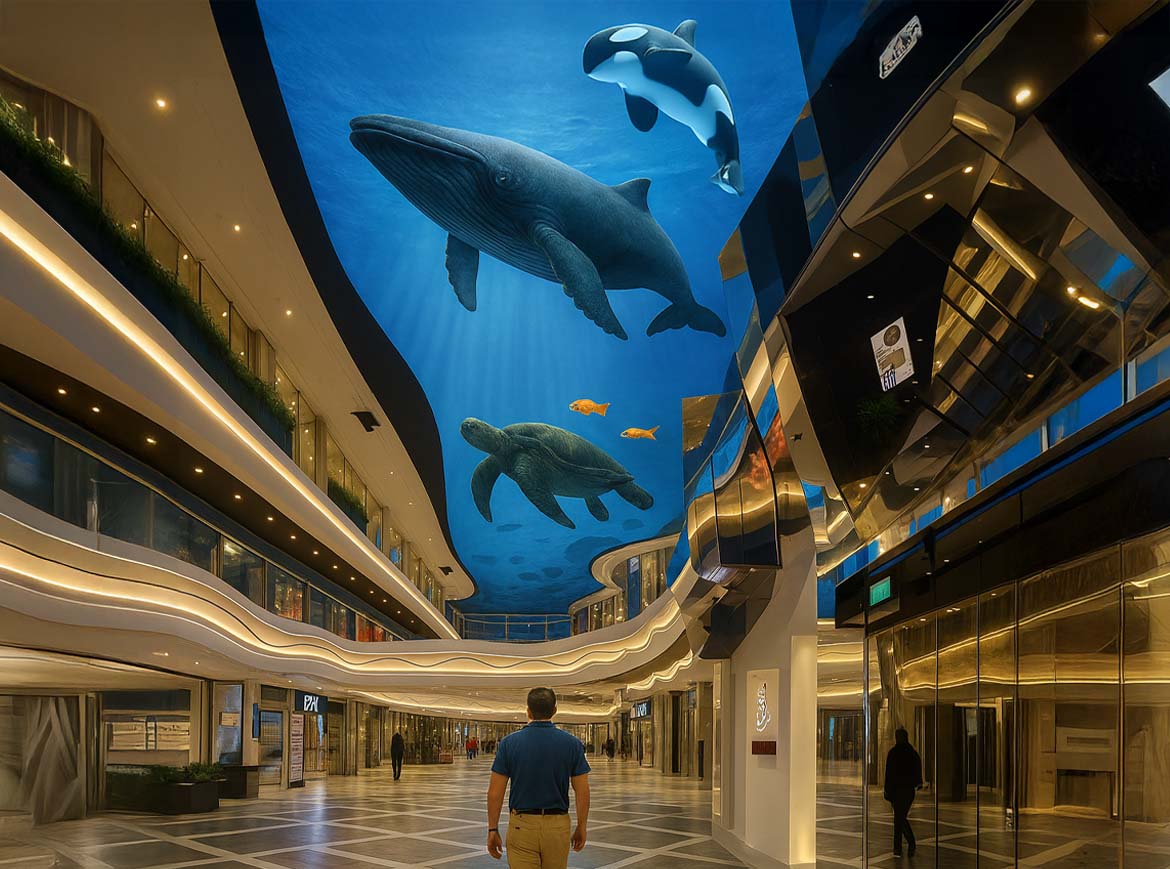Image: Digital sky ceiling on a cruise ship – immersive architecture in motion | Visualization: Visoric GmbH 2025
Image: © Ulrich Buckenlei. I Visoric 2025
The Sky Above the Sea – Digital Architecture in Motion
On a modern cruise ship, architecture, light, and real-time content merge into a spatial narrative. The “Digital Sky” spans as a media ceiling over central areas and reacts in real time to sensor data: course, speed, weather, sea state, and visitor traffic. AI models interpret these data streams and modulate color, brightness, patterns, and audiovisual scenes so that the space always responds precisely to the guests’ mood and situation. This creates a place that relaxes, activates, or informs—not by chance, but based on clear experience goals.
The added value lies in the connection of function and emotion. Navigation information is integrated into the ceiling as calm visualizations, safety or orientation cues appear discreetly in the peripheral field of view, and evening stagings create a feeling of expanse and wonder. People linger longer, find what they are looking for faster, and remember the place more strongly. Digital architecture works here like an invisible conductor: it sets accents, creates pauses, structures flows—and remains intuitively experienceable.
- Architecture reacts to movement and data
- Spatial design becomes a real-time experience
- Technology creates orientation, atmosphere, and emotion
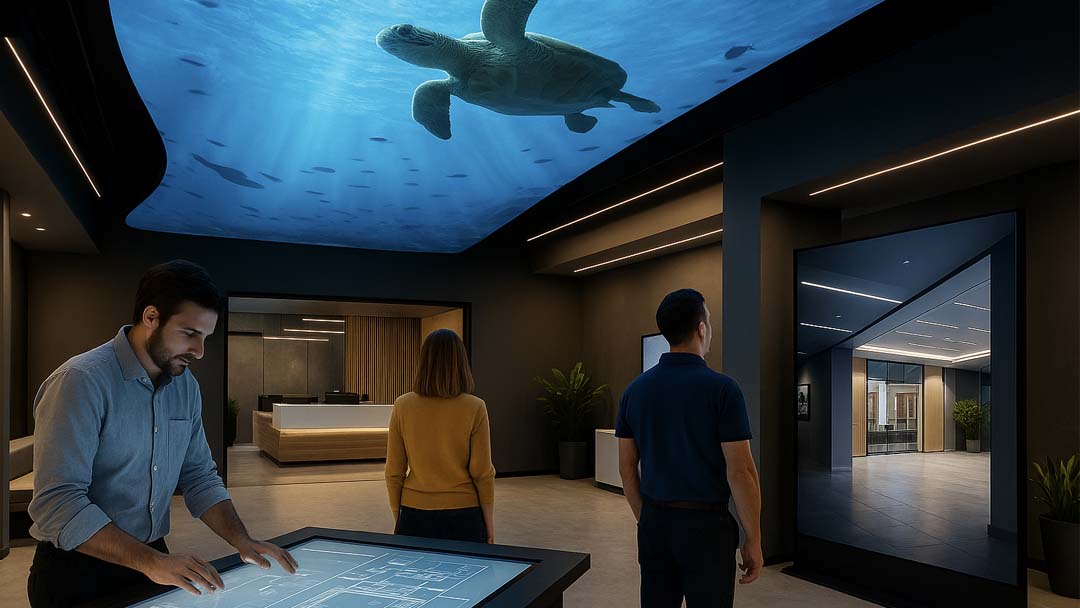
Image: Digital Sky on board – real-time staging reacts to course, weather, and time of day | Visualization: Visoric GmbH 2025
From this logic emerges a scalable principle: where sensors read, AI interprets, and real-time 3D visualizes, space becomes adaptive. Maritime requirements act as a stress test. Those who stage reliably here transfer the same precision to other environments on land—with greater design freedom and additional interaction forms for visitors.
From Vision to Installation – Creative Engineering in Practice
The path from idea to functioning system follows a clear process logic. At the beginning is a short, precise narrative: What feeling should the space evoke, what action should it support, what information should be made visible? From this arise experience goals, zones, and dramaturgical arcs, which are translated into storyboards, content maps, and system architectures. Design, software, and hardware are not conceived separately, but as an overall system designed for performance, maintainability, and safety.
In the concept phase, we define content engines and control logics: Which data sources are relevant (e.g., people flow, light, temperature, IoT, schedule), which scenes are generated generatively, and which manual triggers are available for show moments? Prototyping tests the impact early at a 1:1 scale—including light, material, and viewing angles. Only when the interaction in the space convinces are hardware specifications, media server setups, and network design finalized. Installation, commissioning, and training complete the arc from design to operation.
- Strategic spatial concepts with XR and AI
- Real-time control and data integration
- Technical design for scalable environments
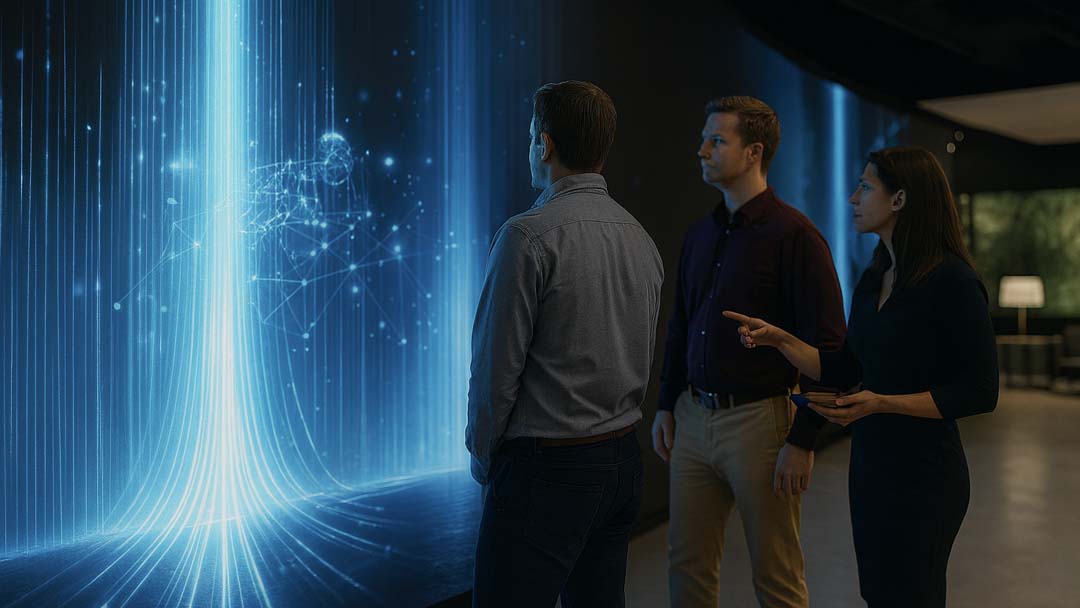
Image: From maritime vision to industrial application – immersive architecture for brand and technology spaces | Visualization: Visoric GmbH 2025
The distance between ship and showroom is smaller than expected: the high-performance content pipeline, robust sensing, and clear operational processes remain identical. On land, additional layers are added—AR-supported product stagings, interactive walls, responsive light ceilings—that use the same framework and increase the intensity of the experience.
Technology Meets Spatial Feel – AI, XR, and Real-Time 3D Precise Integration
Technology is only convincing when it feels like space. For this, three layers must interlock smoothly: capture, interpretation, and rendering. In capture, sensors read movements, positions, gaze directions, noise levels, and ambient light. In interpretation, AI models condense these signals into meanings: group formation, interest, flow, load. In rendering, a real-time 3D engine translates the results into light, color, form, sound, and information—always in harmony with materiality and architecture.
Methods like Gaussian Splatting provide photorealistic spatial representations that subtly blend with the physical place in real time. AR layers enable individual depths of information without overloading the space. The effect check is crucial: every technical decision is measured against perception, orientation, and atmosphere. The result is an environment that responds to people without imposing itself—and thus remains viable for a long time.
- AI-based analysis and real-time visualization
- Spaces respond to position, gaze, and movement
- Design becomes interaction with depth
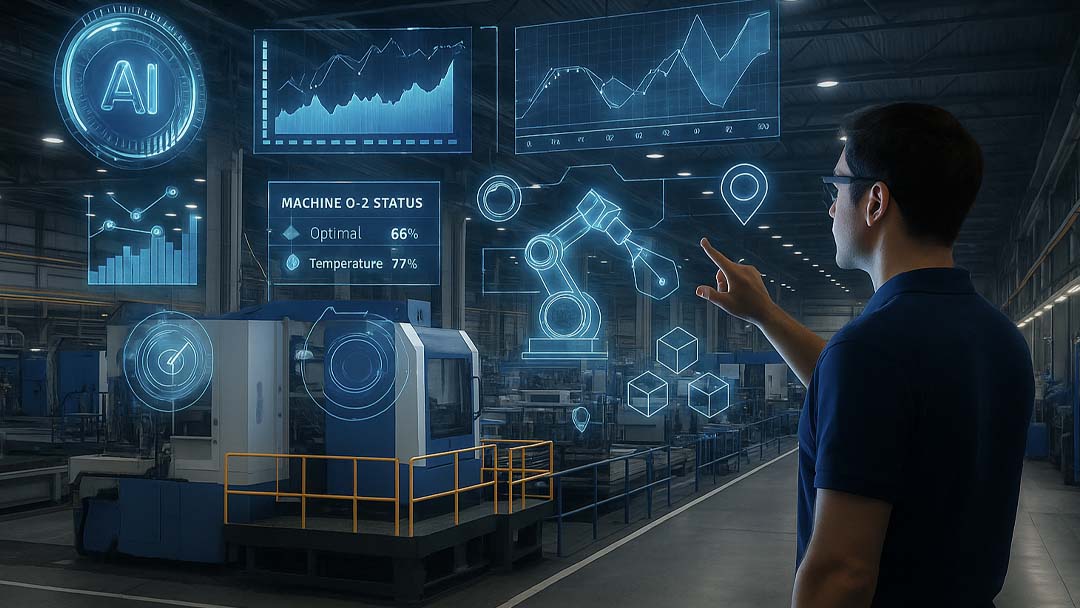
Image: Sensor-based light and data integration – behavior becomes visual choreography | Visualization: Visoric GmbH 2025
The technical depth never serves as an end in itself. It is the prerequisite for spaces to feel organic, for orientation to remain intuitive, and for content to treat attention with respect. This builds trust—the foundation for true participation and sustainable use.
Impact and Value – Scientifically Proven, Practically Tangible
Immersive architecture is measurably effective. Studies in brand research, behavioral psychology, and service design show that adaptive spaces significantly increase dwell time, interaction, and recall. In addition, the business impact can be demonstrated: reusable real-time assets, modular content strategies, and data-driven optimization reduce total costs over the lifecycle and accelerate rollouts at additional locations.
Our two diagrams below condense insights from industry reports and our own project evaluations. They illustrate why a media-architectural approach goes beyond classic displays: it’s not the screen area that counts, but the fit with the space, the adaptive orchestration, and the ability to convey complex information with calm and clarity.

Image: Engagement Levels by Experience Type (Static Display, AR, XR, Immersive Space) – higher dwell time and interaction in immersive environments
Source note: Synthesis of publicly available industry studies (e.g., McKinsey, Deloitte, Snap) and internal project evaluations. Exact values vary by context; a typical proportional pattern is shown.
The visualization shows a consistent picture: the stronger the spatial embedding, interactivity, and real-time response, the higher the dwell time, eye contact, and voluntary interactions. XR-supported spaces outperform isolated displays, and immersive architectures create particularly lasting memory anchors because they engage multiple senses simultaneously and remain situationally relevant.
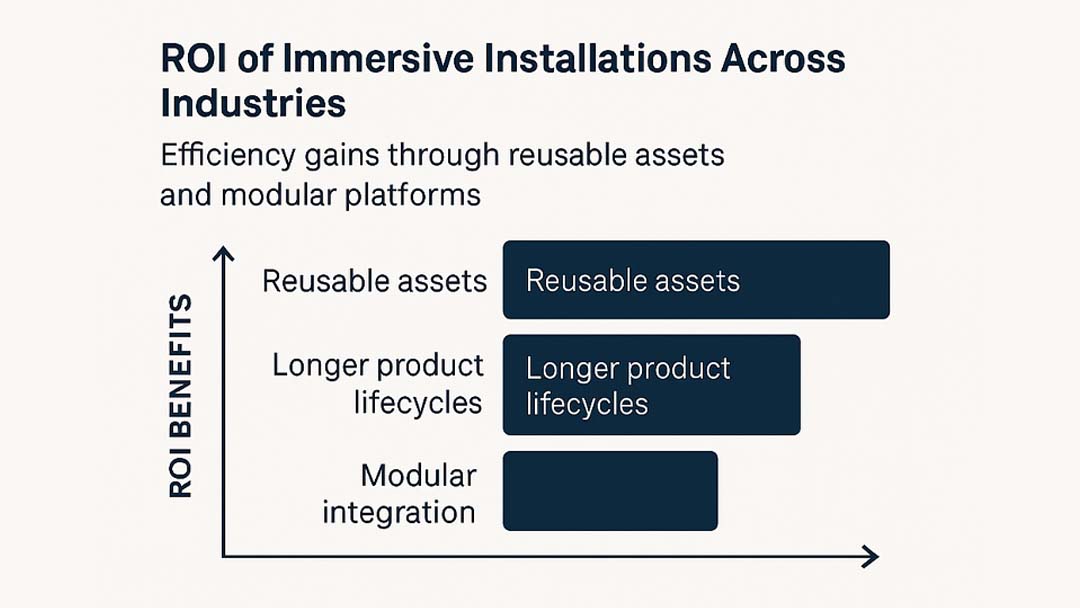
Image: ROI of Immersive Installations Across Industries – efficiency gains through reusable real-time assets and modular platforms
Source note: Aggregated practical experience from projects plus industry-related literature. ROI drivers: asset reuse, modular integration, data-driven optimization, shortened iteration cycles.
- Immersive spaces significantly increase engagement and dwell time
- Long-term ROI through reusability of digital assets
- Brand perception and recall measurably increase
What the numbers describe is experienced intuitively by people: spaces that respond remain in memory. They are clear, friendly, and orienting—and they respect attention instead of overwhelming it. Exactly this quality pays off in operation.
Spaces of the Future – From Ship to Showrooms, Industry, and Experience Worlds
The principles that work at sea scale on land: in showrooms, the “Digital Sky” becomes a brand stage; in industrial halls, a subtle information layer that supports safety, maintenance, and training; in hotels, an atmospheric lobby narrative; and in leisure environments, an immersive backdrop that actively involves visitors. The decisive factor is architecture as a system: modular, updatable, and with clear interfaces to building services, IoT, and content productions.
This creates environments that adapt to times of day, frequencies, and usage patterns. An airport hangar receives an AI-supported light ceiling that helps teams work with focus and organizes visitor flows. An automotive experience center connects AR product stagings with real-time data from the vehicle. A maritime terminal uses generative visualizations for orientation and calming. One technology—many characters, each precisely tailored to its place.
- Modular systems for diverse industries
- AI-driven adaptation to time, movement, mood
- Connecting art, data, and architecture

Image: Adaptive architecture in industrial environments – quiet, clear, reliable | Visualization: Visoric GmbH 2025
The bridge back to the ship is obvious: the same platform, the same quality criteria, the same demand for robustness. What performs stably on the water convinces in any environment with high complexity—and grows with new requirements.
Digital Experience Spaces – Video Insight
The following video impressively shows how architecture, light, and real-time data merge into a living experience. The “Digital Sky” installation on board the MSC World Europa combines AI, XR, and sensing into an immersive spatial staging that adapts in real time to course, weather, and visitor flows. This creates an atmosphere that informs, inspires, and excites—architecture that responds to people.
The real-time visualization translates measured data into light, color, and motion, creating a space that actively responds to its environment. The effect is measurable: extended dwell time, higher attention, and increased emotional attachment. The project thus exemplifies how AI-supported architecture sets new standards in design, orientation, and visitor communication.
Insight: Real-time 3D, sensing, and AI in spatial staging | Source: msccruisesofficial (original visuals), concept and staging: Visoric GmbH 2025
The added value of these solutions lies in their accessibility: no barrier for visitors, clear orientation, and respectful handling of attention. Technology recedes into the background—the experience itself moves to the foreground: calm, precise, and effective. This creates a new form of spatial communication that connects people with digital content in an intuitive way.
From Vision to Operation – Collaboration and Services
To turn a creative idea into a robust system, we connect story, technology, and operations. Our approach is collaborative: we think alongside the on-site teams, plan openly along existing infrastructures, and document in such a way that operation and further development are easy. Each phase is interoperable: from analysis and ideation through design and prototyping to commissioning and training.
- Consulting and creative engineering
- Technical implementation with XR, 3D, and AI
- Integration, operation, and further development
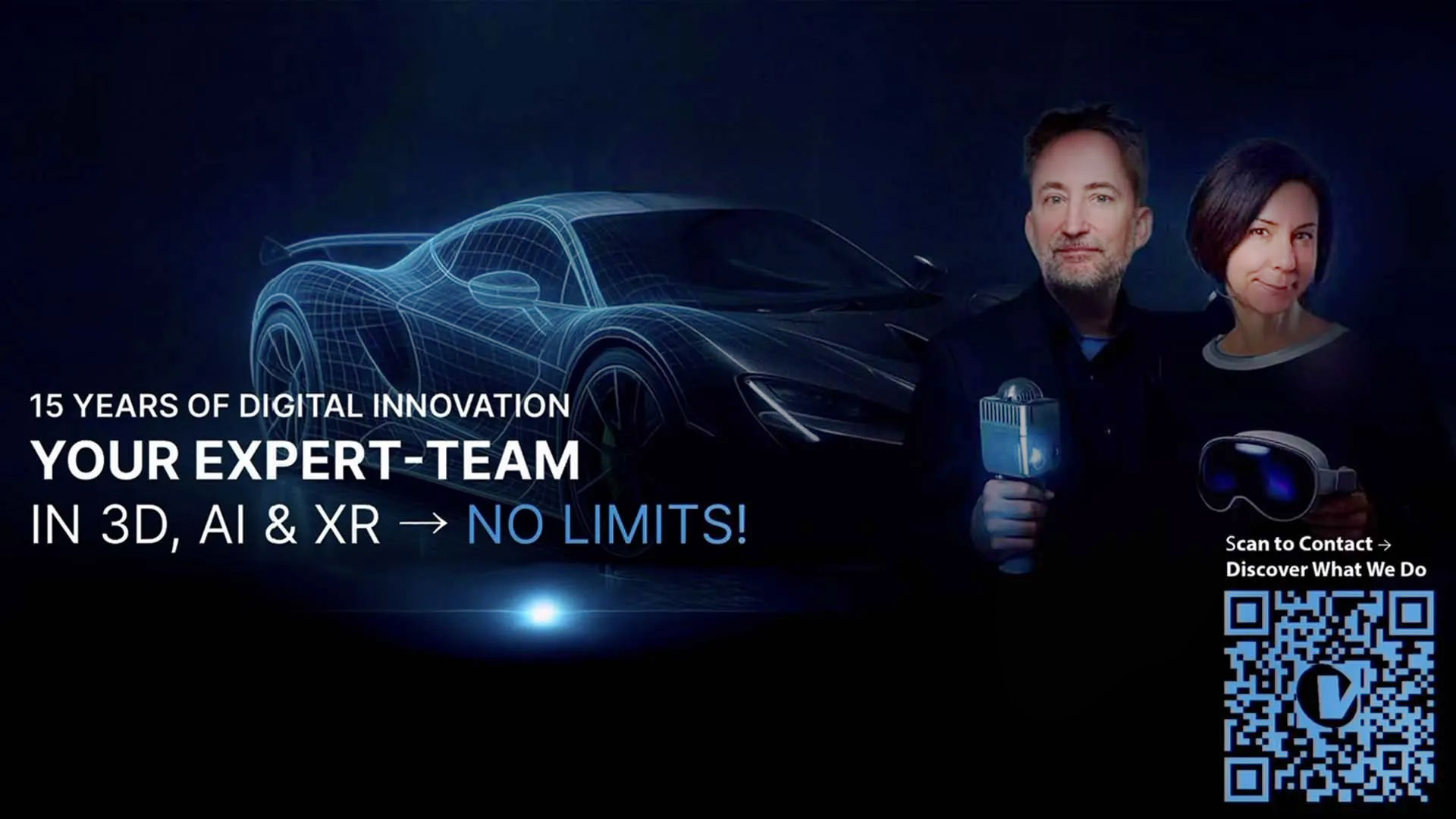
Image: Digital experiences at the intersection of design and operations | Visualization: Visoric GmbH 2025
Our goal is always the same: spaces that people intuitively understand and enjoy using. Places that communicate without being loud. Architecture that reads data and translates it into emotion—precise, beautiful, and reliable.
Get in Touch
Would you like to develop immersive architecture for a ship, showroom, industrial hall, or experience world? Talk to the Munich-based Visoric expert team. Together, we design digital spaces in which technology, design, and storytelling merge into clear value.
- Consulting and ideation workshops
- Technical implementation with XR, 3D, and AI
- Integration and operation of high-performance real-time systems
Now is the right time to rethink spaces—we look forward to your vision.
Contact Us:
Email: info@xrstager.com
Phone: +49 89 21552678
Contact Persons:
Ulrich Buckenlei (Creative Director)
Mobil +49 152 53532871
Mail: ulrich.buckenlei@xrstager.com
Nataliya Daniltseva (Projekt Manager)
Mobil + 49 176 72805705
Mail: nataliya.daniltseva@xrstager.com
Address:
VISORIC GmbH
Bayerstraße 13
D-80335 Munich


